 W
WThe International horticultural exposition 1993 was held at the Baden-Wuerttemberg state capital, Stuttgart, Germany. The IGA was within the past 54 years already the fifth major horticultural show which hosted Stuttgart in the 20th century. Recognised by the Bureau International des Expositions (BIE), the Expo ran from April 23, 1993, to October 17, 1993. Held at Wartenberg and Killesberg parks, the goal was to be visually and functionally integrated with the two challenging terrains, the Wartberg and the Leibfriedsche garden. This was achieved. The long Advised long-term goal to pull a U-shaped green belt around the city, which became a reality. The mascot of the horticultural show called "Flori", a bird with a cowboy hat. Overall, 7.3 million people visited the garden show. Thus the expectations of the city fathers were exceeded, because it had been expected a turnout of 7 million.
 W
WThe 2003 World Horticultural Exposition was organized in the City of Rostock in Germany. It was the 17th international horticultural exposition recognized by the Bureau International des Expositions. The park was created in a derelict area around ruins of the former village of Schmar on the banks of the river Warnow. This made it possible to have a connection between water and gardens.
 W
WThe International Association of Horticultural Producers is an international organization dedicated to promoting horticultural producers and held the international garden / flora festivals or expositions.
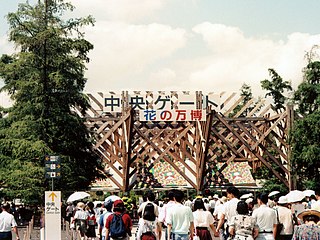 W
WExpo '90 or The International Garden and Greenery Exposition, organized as a part of the International Expositions Convention, was the first large-scale international gardening exposition in Asia and focused on the theme of the "Harmonious Coexistence of Nature and Mankind." The exposition was held in Tsurumi Ryokuchi, Osaka for 183 days, from Sunday, April 1 to Sunday, September 30, 1990. The convention included participation from 83 countries and 55 international organizations and attracted over 23,126,934 visitors.
 W
WExpo 2016 was an international horticultural exposition held in Antalya, Turkey. With the support and endorsement of both the Bureau International des Expositions (BIE) and the International Association of Horticultural Producers (AIPH), Expo 2016 Antalya was the first A1 Category International Horticultural Exhibition to be held in Turkey.
 W
WThe Floralies Internationales de Montréal was the 8th international horticultural exposition recognized by the Bureau of International Expositions. The Expo was split in two sequential exhibitions, starting with an indoor event in the former Olympic Velodrome and later on different gardens on Notre Dame Island, the site of the Expo 67. 17 countries were represented at the indoor exhibition and the Velodrome was converted to Montreal Biodome afterwards. The indoor exhibition opened on May 17 and closed May 29. The gardens at the outdoor part opened on May 31. 12 countries showed their gardens to the public during the summer until September 1.
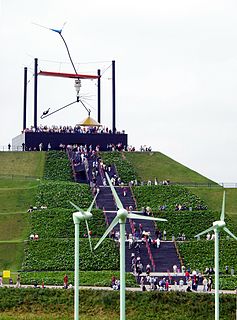 W
WFloriade is an international exhibition and garden festival, held every 10 years in the Netherlands. All have been World Horticultural Expositions and listed as an A1 category exhibition by the International Association of Horticultural Producers and hence recognised by the Bureau International des Expositions. The next Floriade will be held in 2022 in Almere.
 W
WFloriade 1972 was a garden festival held in Amsterdam, Netherlands following its recognition by the Bureau International des Expositions (BIE). The 1972 exposition was the fifth edition of the international horticultural exposition organised under the auspices of the Association of International Horticultural Producers (AIPH) and the second Floriade in the Netherlands. The first Amsterdam Floriade lasted from March 30 to October 1, 1972.
 W
WFloriade 1982 was a garden festival held in Amsterdam, Netherlands. The second Amsterdam Floriade was recognised by the Bureau International des Expositions (BIE) and held from April 8 to October 10, 1982. It was the 9th edition of the international horticultural exposition organised under the auspices of the Association of International Horticultural Producers (AIPH) and the third held in the Netherlands. Floriade 1982 was held at a recreation area surrounding the Gaasperplas lake in the neighborhood of Gaasperdam. The entrance to the Floriade was near the previously constructed Gaasperplas metro station.
 W
WFloriade 1992 was an international garden exhibition held in Zoetermeer, Netherlands, recognized by the Bureau International des Expositions (BIE) and organized under the authority of the Dutch Ministry of Agriculture and Fisheries. The Floriade ran from April 9 to October 10, 1992, and was held on a converted pasture outside Zoetermeer near The Hague. The exhibition covered 168 acres and had participants from more than 20 countries. Thirteen foreign countries participated. The Floriade hosted 3.36 million visitors.
 W
WThe 2002 Floriade international horticultural exposition took place from April 6 to October 20, 2002, in Haarlemmermeer, Netherlands, with a theme of Contribution of Horticulture in the quality of life in the 21st century. Recognised by the Bureau International des Expositions (BIE), the festival covered 65 hectares and had 30 participating countries.
 W
WThe Floriade 2012 was a Dutch horticultural exposition held in Venlo, Netherlands. It was the nineteenth AIPH world horticultural exhibition and the sixth Floriade and was held from April 5 to October 7, 2012. The Floriade 2012 was opened by Queen Beatrix. The exposition's theme and slogan was "Be part of the theatre in nature; get closer to the quality of life".
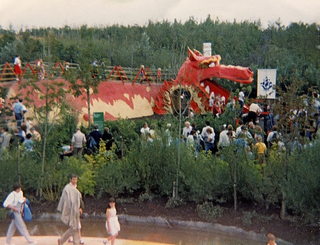 W
WThe International Garden Festival was a garden festival recognised by the International Association of Horticultural producers (AIPH) and the Bureau International des Expositions (BIE), which was held in Liverpool, England from 2 May to 14 October 1984. It was the first such event held in Britain, and became the model for several others held during the 1980s and early 1990s. The aim was to revitalise tourism and the city of Liverpool which had suffered cutbacks, and the idea came from Conservative Environment Minister Michael Heseltine. The festival was hugely popular, attracting 3,380,000 visitors.
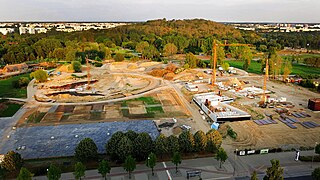 W
WThe Internationale Gartenausstellung 2017 was an international horticultural exhibition that took place in Berlin, Germany, in 2017.
 W
WThe Qingdao International Horticultural Exposition 2014 is a horticultural exhibition recognised by the International Association of Horticultural Producers in Qingdao, China. It is being held from April 25 to October 25 in Baiguo Mountain Park of Licang District. The motto of the exhibition is: "From the earth, for the Earth".
 W
WThe Royal Flora Ratchaphruek was an international horticultural exposition held 1 November 2006 to 31 January 2007 in the Thai city Chiang Mai of Chiang Mai Province that drew 3,781,624 visitors. Recognised by the Bureau International des Expositions (BIE), it was one of the grand celebrations hosted by the Royal Thai Government in honor of King Bhumibol, the world's longest reigning monarch.
 W
WShenyang China International Horticultural Exposition 2006 (2006中国沈阳世界园艺博览会) was a horticultural exhibition recognised by the International Association of Horticultural Producers in Shenyang, China
 W
WThe 2010 Taipei International Flora Exposition opened on 6 November 2010 and ran until 25 April 2011 in Taipei, Taiwan, Republic of China. It was a garden festival recognized by the International Association of Horticultural Producers and was categorized as an A2/B1 horticulture exposition. It was the first such internationally recognized exposition to take place in Taiwan, and the seventh of its kind to take place in Asia. It is located near Yuanshan Station. The area is now converted to Taipei Expo Park.
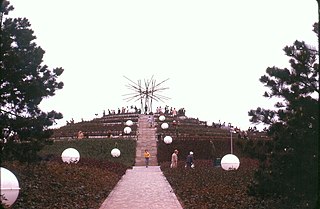 W
WThe Wiener Internationale Gartenschau 74, often shortened to WIG 74, was a garden festival held in Vienna, Austria. Recognised by the Bureau International des Expositions, the Expo was the second international horticultural exposition to be held in Vienna under the auspices of the AIPH. The plans for the Expo began to develop shortly after the closing of the WIG 64 held a decade earlier. Following the success of the 1964 exposition, the council was urged to re-organize a horticultural exhibition. An area on the south side of town that had once served as a recording field for silent films was ideally suited to create a large park. In 1969, architect Erich Hanke won an international design competition. He then formed several working groups of landscape architects from various countries, who made different designs for parts of the site. The best designs were incorporated into the grounds. A monorail was built to transport the visitors, but was eventually scrapped due to lack of success.